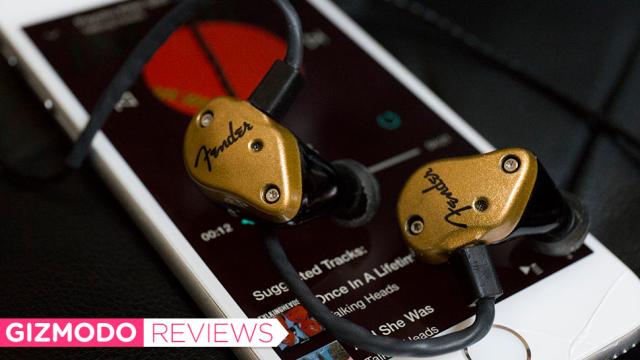The best headphones transform the music. They reveal notes lost and whispers hidden and the rub of a finger down the string of a guitar. They expand the music and transport you. Whenever you move up a price point, the sound should move too. And that’s exactly what happened with the Fender FXA7 in-ear monitors (IEMs).
AU Editor’s Note: You can’t buy the Fender FXA7 at retail in Australia, but you can buy them online, including at big internationally-shipping digital retailers like Amazon. — Cam
The last in-ear headphones in the $US500 range I tried didn’t do that. They were a pair of Shure 535s. I loved my Shure 215 Special Editions and wanted to chase the lost bits of my music again, to find all the things I’d been missing. So I spent $US455 ($620), and I queued up a mix of some of my favourite songs.
I was underwhelmed. Within a week the 535s were on their way back to Amazon, and I was on the hunt for a pair of IEMs that would reveal what the 215SEs were hiding from me. Making the jump from more conventional earbuds to professional-grade IEMs, the more sophisticated devices that musicians tend to use on-stage, should offer better fidelity.
But I didn’t anticipate that Fender’s new IEMs would be so stunning. Earlier this year, Fender bought a small boutique headphone company (Aurisonics) and started making Fender-branded headphones. That’s not as bad as companies that slap their names on subpar products to catch a little of an emerging market — but it still left me a little wary.
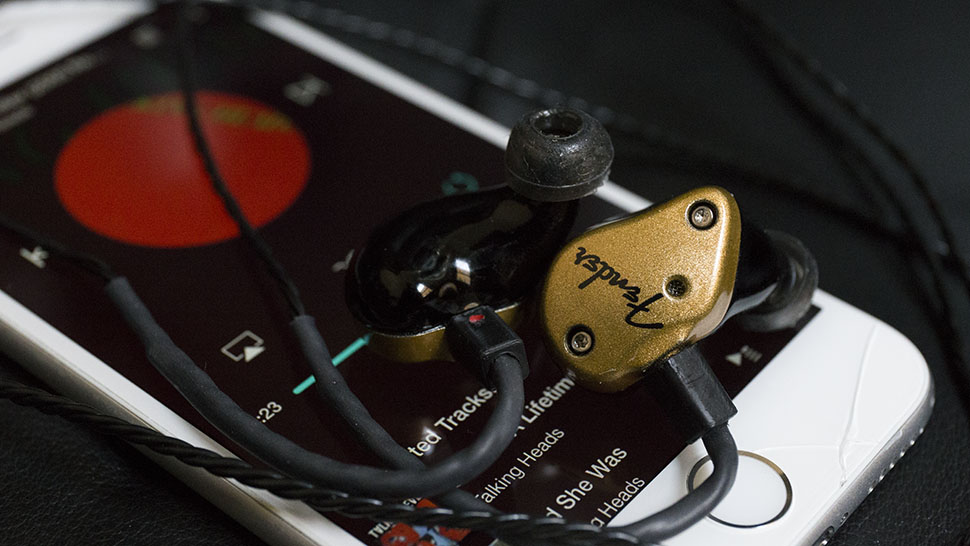
Thankfully, Fender has created a really solid series of products — from the $US200 ($271) FXA2 to the $US500 ($677) FXA7 I’ve been wearing. Fender’s also produced a “budget” pair, the DXA1, with a more traditional Shure-like form factor. Those retail for $US100 ($135), and Fender has made it clear that they’re the cheapest pair of headphones the company will produce. “We don’t want to compromise quality for price,” a Fender rep told me.
Fender instead wants to get into the parts of the live music scene that it’s been missing out on. That’s why these are IEMs. While audiophiles like myself love IEMs for the high quality sound — musicians prefer them for their highly accurate rendition of whatever the hell they’re playing.
And the FXA7s I tried out are more than just accurate. They’re a joy. I can hear the clap of a wooden block in Feist’s “Sealion” that I’ve never heard before. And over there the steel guitar in Dolly Parton’s “Jolene” pitches just right. (Why do must headphones so thoroughly screw up the steel guitar?) There’s that delicate timber to pianos in Rachmaninoff’s “Piano Concerto No. 2” that I didn’t realise I’d been missing in other headphones. It’s not quite the hammer on the piano string, but the soul-thrumming vibration that would accompany it if you were in the room with the instrument. And Soul Coughing’s “Blame” — which will wreck most bass heavy headphones — is smooth. It’s like you’re standing right in front of the stand-up bass.
It was the bass that really surprised me about the FXA7s. IEMs of all kinds are known for their extraordinary detail. You’re spending a hundred plus dollars on a pair of speakers you jam into your ear canals. Between the noise reduction and the proximity to your delicate inner ear, IEMs can deliver a lot of detail t that’s frequently lost in big fat headphones that sit on your ear. But IEMs also lack a lot of warmth. String instruments in particular tend to sound sterile and digital.
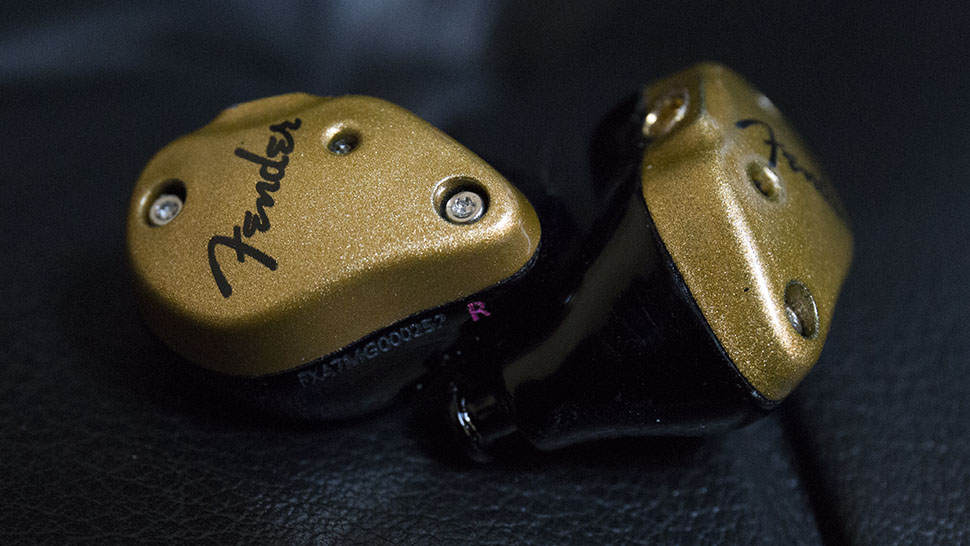
Much of that is due to the type of speaker system within the IEM. Most (included the Shure 535s I hated) use what’s called a “balanced armature.” They’re very tiny, very accurate, and they struggle with the lower frequencies that good bass requires.
Fender uses a hybrid armature that blends the balanced armature with traditional dynamic speakers (found in most over-the-ear headphones and a few IEM brands). The tech is based on the work of Aurisonics, the small IEM company that Fender purchased last year. But mixing up the two styles of sound reproduction, and throwing in a bass port so air can move in and out of the ear without disrupting the tight seal, Fender’s IEMs produce a lot of bass.
The IEMs are wickedly fun to listen to. They rarely sacrifice accuracy to do so, which is great because Fender wants these headphones to be worn by musicians doing gigs and sound engineers running boards. The fact that they work for the rest of us is just icing on the cake.
Well… they don’t work for all of us. Fender assured me that its IEMs would fit up to 95-per cent of people comfortably. However if tiny ear canals run in your family, like they do in mine, you’ll experience a little discomfort. The Fender IEMs are big.
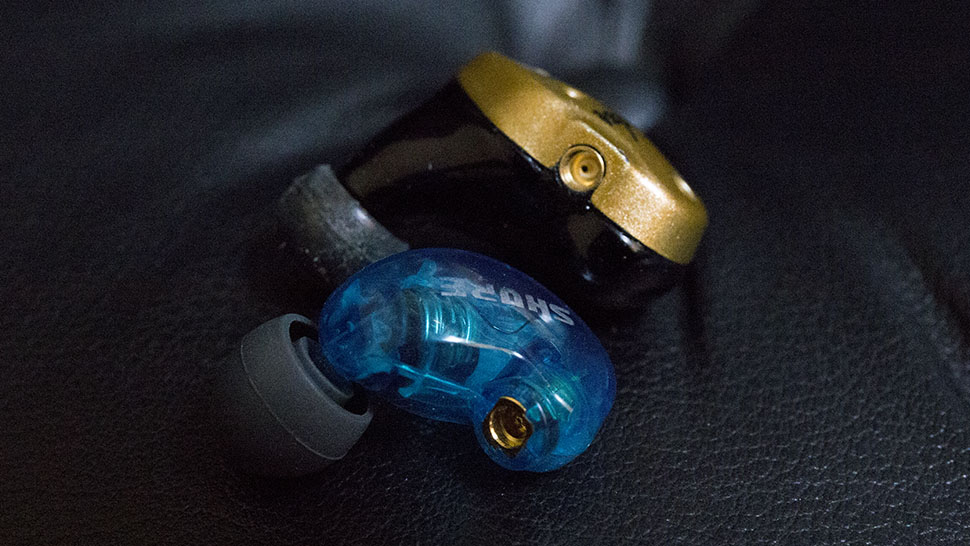
Giant headphones. Also a close up of their MMCX connector.
They also use a connector that is theoretically the universal MMCX connector found in many other IEMs, including Shure’s entire line up. In practice, I would not recommend using other MMCX cables with the Fender headphones. The audio wasn’t quite as loud, and the connectors didn’t actually click into the ports on the Fender headphones. Other cables will work in a pinch but will ultimately be lousy for regular use. Use the Fender cables.
But it’s not fair to compare the chunky FXA7s to my much cheaper Shure 215 SEs. These are headphones for rocking out on stage or bopping along at your desk — not for epic walks with the dog or long subway commutes. The Fender FXA7s haven’t replaced any of my headphones, but they have supplemented them nicely. When I’m in a coffee shop mainlining techno trying to crank out a book chapter of a book, I’d reach for the FXA7s. And when I take a plane next month I’ll wear the FXA7s instead not a pair of noise-cancelling earmuffs.
The Fender FXA7s did exactly what I need a pair of $US500 ($680) headphones to do. They dug deep and found all the missing notes of the music I listen to. And they delivered those notes with an almost incomparable warmth.
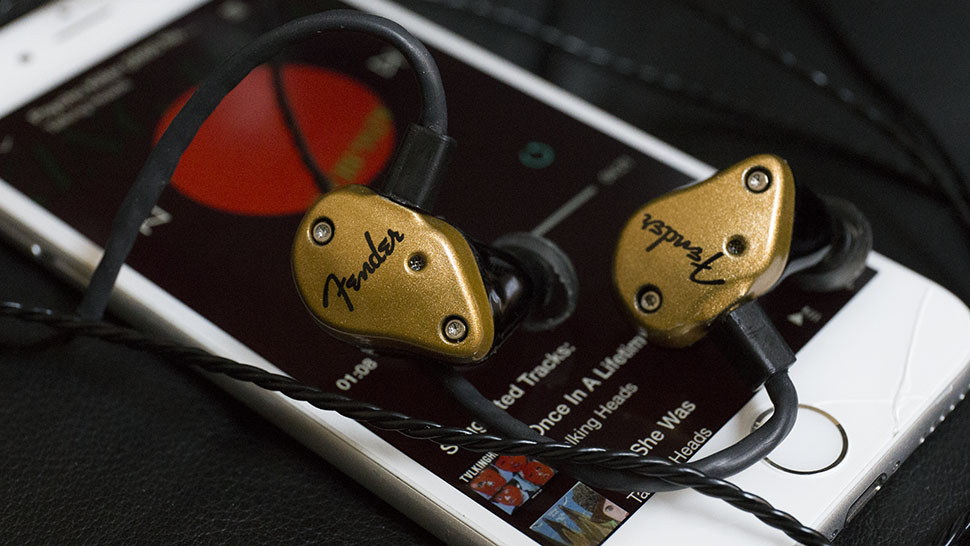
README
- The Gigantor of the Inner Ear Monitors. Tiny-eared people need not apply.
- Spectacular bass performance and incredibly warm reproduction of music.
- Also high detailed. You’ll heard instruments you didn’t even know where in songs.
- The silicon tips that go in your ear are sticky. Great for creating a seal, but prone to picking up lint in your pocket.
- But seriously, these things are huge.
